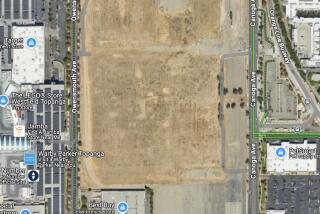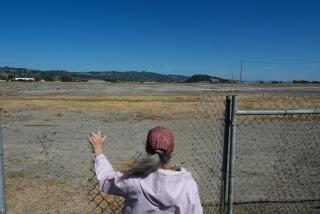Love Canal Resettled; Restoration Is Suspect
NIAGARA FALLS, N.Y. â Twenty-five years ago, an underground cauldron of chemical soup bubbled into backyards and basements from an abandoned canal.
Some 800 families were evacuated, 300 homes demolished.
The discovery ignited fears of cancer and birth defects, gave rise to the Superfund law that governs environmental cleanups, and forever linked one name to toxic disasters: Love Canal.
Today, parts of Love Canal are thriving.
Pristine houses sit behind manicured lawns and pots of bright red geraniums.
And in June, the state agency charged with revitalizing the area officially disbanded, its work successfully completed.
Yet the debate over whether it is safe to live in Love Canal continues.
âIt bothers me to see little children playing in that same area where there are still chemicals,â said Luella Kenny, who blames the 1978 death of her 7-year-old son, Jon, on the chemicals in a creek that ran through her back yard.
But Bob Gray isnât worried.
âI donât know if Iâm naive, but I donât think theyâre going to make the same mistake twice,â he said.
From his front porch, Gray can see the so-called âcontainment areaâ for the poisons -- 70 grassy acres, surrounded by a chain-link fence.
At the center is the 16-acre canal dump site where 21,800 tons of World War II-era chemical byproducts are buried under a thick clay cap, high-density polyethylene liner and topsoil. Two streets, a school and a Little League diamond once stood on the spot.
To the west of the waste site is overgrown vacant land, where homes were bulldozed. Those lots are not safe to live on, fit only for the industry that has yet to come.
But north of the waste site, where Gray lives now, an eerie ghost town existed until the 239 homes that remained were stripped and rebuilt by the stateâs Love Canal Area Revitalization Agency.
Frank Cornell, director of the revitalization agency, recalled one house where a framed baby portrait was still hanging on the wall and a 1980 newspaper lay open on the floor.
âItâs as if the people were just beamed away,â Cornell said.
Many people fled in a panic when the mass evacuations took place in 1978 and 1980.
People who moved into the rebuilt homes -- which sold for $50,000 apiece -- were well-informed about the areaâs history.
Among them were Rose and Ellis George, who abandoned their previous home near the site, then later moved to a refurbished one across from the containment area.
The Georges, who reared seven children, were never convinced of the danger.
âIâm 77 and still here, right?â Ellis George asked. âMy kids are all healthy.â
James Wilson, 39, and his mother still live there too; his father died of cancer two years ago.
As a child, he recalled playing with phosphorous âfire rocksâ that sparked when thrown to the ground, and his mother always knew that heâd been swimming in a creek because he smelled like chemicals when he came home.
But he said his parents stayed there âbecause theyâd worked from nothing to have a house.â
The company that dumped the waste in the 1940s and â50s, Occidental Chemical Corp. (formerly Hooker Chemical & Plastics Corp.), is still a major local employer.
It has paid more than $233 million to cover cleanup costs and medical expenses for victims of the contamination, and still pays for 24-hour monitoring of the site.
âThe entire area is probably one of the most tested pieces of property on this planet,â said Mike Basile, spokesman for the U.S. Environmental Protection Agency. âItâs probably one of the safest places to live.â
But Lois Gibbs, a longtime critic and one of the original residents, views the resettlement and construction of a park next to the containment site an âoutrageousâ attempt by industry to prove that toxic waste can be controlled.
âItâs so safe weâre going to put the kids here,â she said sarcastically. âItâs insane.â
The long-term health effects of the chemicals are unclear. Results of a state study tracking birth defects, illness and deaths among former residents are expected in a few months.
But critics already take issue with the methodology and how data is being interpreted.
Meanwhile, a monument is being designed to mark the Love Canal crisis, and the revitalization agency is planning a dinner and cocktail party to celebrate completion of its mission.
âIâm real satisfied,â Cornell said. âWeâve done the best we can.â
More to Read
Sign up for Essential California
The most important California stories and recommendations in your inbox every morning.
You may occasionally receive promotional content from the Los Angeles Times.










